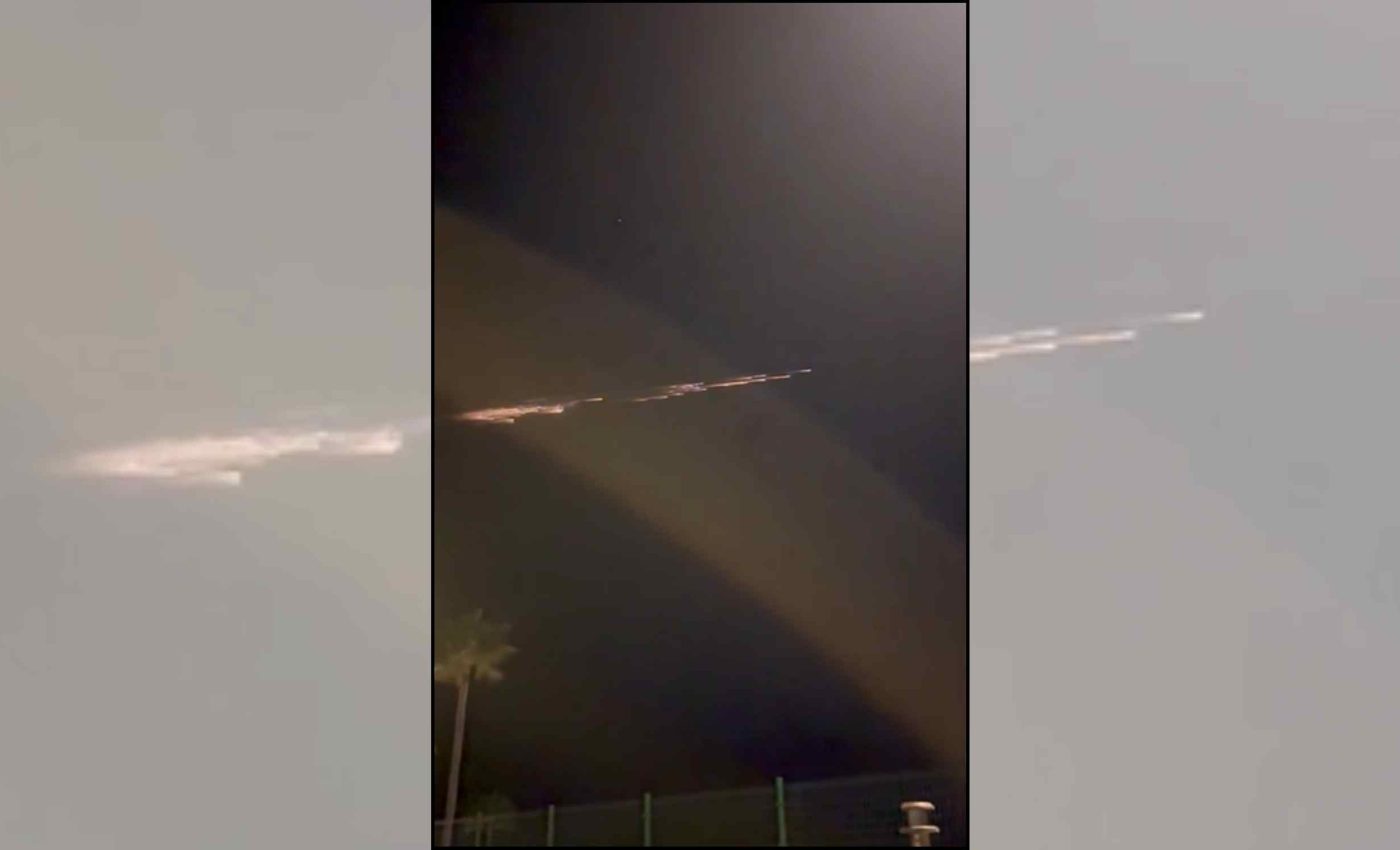
Chinese satellite disintegrates at supersonic speed, producing a very strong shockwave
A bright fireball broke apart above the Canary Islands before dawn on October 16, 2025. The islands’ seismic network picked up the vibration around 2:58 a.m. local time.
At first, no one knew if the object was natural rock or space hardware. Hours later, evidence pointed to a Chinese satellite reentry above Tenerife that sent pressure waves across the archipelago.
Shockwave from XYJ-7
This early analysis comes from the Instituto Volcanológico de Canarias, the public research institute that operates the Canary Islands Seismic Network. Its teams track earthquakes, volcano unrest, and unusual acoustic events every day.
A bolide, a very bright meteor that explodes in air, produces intense light and loud pressure waves. This usage matches the American Meteor Society’s technical definition.
The institute emphasized that the signal arrived after the flash, as expected when sound lags behind light.
An official SPMN entry identified the source as the reentry of the Chinese satellite XYJ-7 at 1:55:30 UTC above Tenerife. That catalog notes a train of sonic waves detected on 13 stations in the Canary geophysical network.
Why the ground shook
Low frequency infrasound, sound waves below human hearing, can travel hundreds to thousands of miles through the atmosphere.
A 2013 global analysis demonstrated how an airburst’s infrasound circled the planet and was detected worldwide.
Strong shocks can rattle buildings and break glass if the wave is focused or the burst happens at the right height. A NASA summary describes 1,600 injuries from blown-in windows after the 2013 Russian fireball.
A seismometer, a ground motion sensor that records tiny vibrations, can convert some of that atmospheric energy into ground motion.
The conversion happens when a steep pressure front pushes down on the surface and briefly flexes the ground.
An airburst often produces multiple pressure pulses. Fragmentation spreads the energy along the path, which stretches the signal over minutes on nearby instruments.
Identifying XYJ-7
Video timestamps, seismic arrivals, and eyewitness directions together outline the object’s trajectory. That cross-check is standard in meteor work and also in studies of space debris reentries.
U.S. space sensors maintain a public database that lists bright atmospheric events and their estimated energies. Those data help teams compare fresh signals with prior cases to spot unusual patterns.
Natural meteoroids typically arrive fast, between roughly 25,000 and 160,000 mph. Space debris reenters slower than most meteoroids, yet still at supersonic speeds that can launch a coherent shock front.
The XYJ-7 case fit a controlled orbital decay that ended over Tenerife, matching videos and the seismic timing. The signal was strong, but it was not an earthquake, and it did not indicate volcanic movement.
What counts as a bolide
Astronomers use bolide for a very bright meteor that often explodes at the end of its path. Many agencies also apply the word loosely when a reentry looks similar in brightness and fragmentation.
The visual part is the meteor itself, a hot plasma envelope and glowing trail that fade within seconds. The sound arrives later because acoustic waves move far slower than light.
A steep jump in pressure that moves faster than ordinary sound called a shock wave does the rattling. In closed rooms with large windows, that jump can push on glass and cause breaks if the timing is unlucky.
Fireballs seldom cause damage, but the Chelyabinsk event shows the risk when a large wave hits an urban area. Most injuries there came from people standing near windows when the delayed boom arrived.
A quick reality check on risk
Earth is showered daily by dust-size particles that burn up harmlessly. Larger entries are rarer, and the network of cameras, satellites, and seismic stations keeps improving the detection and classification.
If you ever see a brilliant flash followed by silence, step away from windows and wait. The delay can be tens of seconds or even a few minutes, depending on distance and wind.
Space orbital debris, retired spacecraft or fragments that fall back through the atmosphere, can look like a natural fireball. Analysts sort that out quickly by combining orbit predictions, camera tracks, and arrival times from multiple sensors.
The Canary Islands event turned from mystery to a well-documented reentry within hours. It was a vivid demonstration of how seismology and astronomy now work together to read the sky.
Lessons from XYJ-7
A bright flash is only the start, the story lives in the timing. Light marks where the path was, and sound marks how the energy moved through the air.
Seismic arrivals let researchers investigate atmosphere-ground coupling with real data. Those data also help improve public guidance about safe reactions during future sonic events.
The XYJ-7 reentry shows how citizen videos can complement professional networks. When time and location tags are reliable, those clips anchor reconstructions at street level.
The same tools also test how well hazard models predict window breakage. Better models mean better advice when rare, high-energy entries happen above populated regions.
—–
Like what you read? Subscribe to our newsletter for engaging articles, exclusive content, and the latest updates.
Check us out on EarthSnap, a free app brought to you by Eric Ralls and Earth.com.
—–













